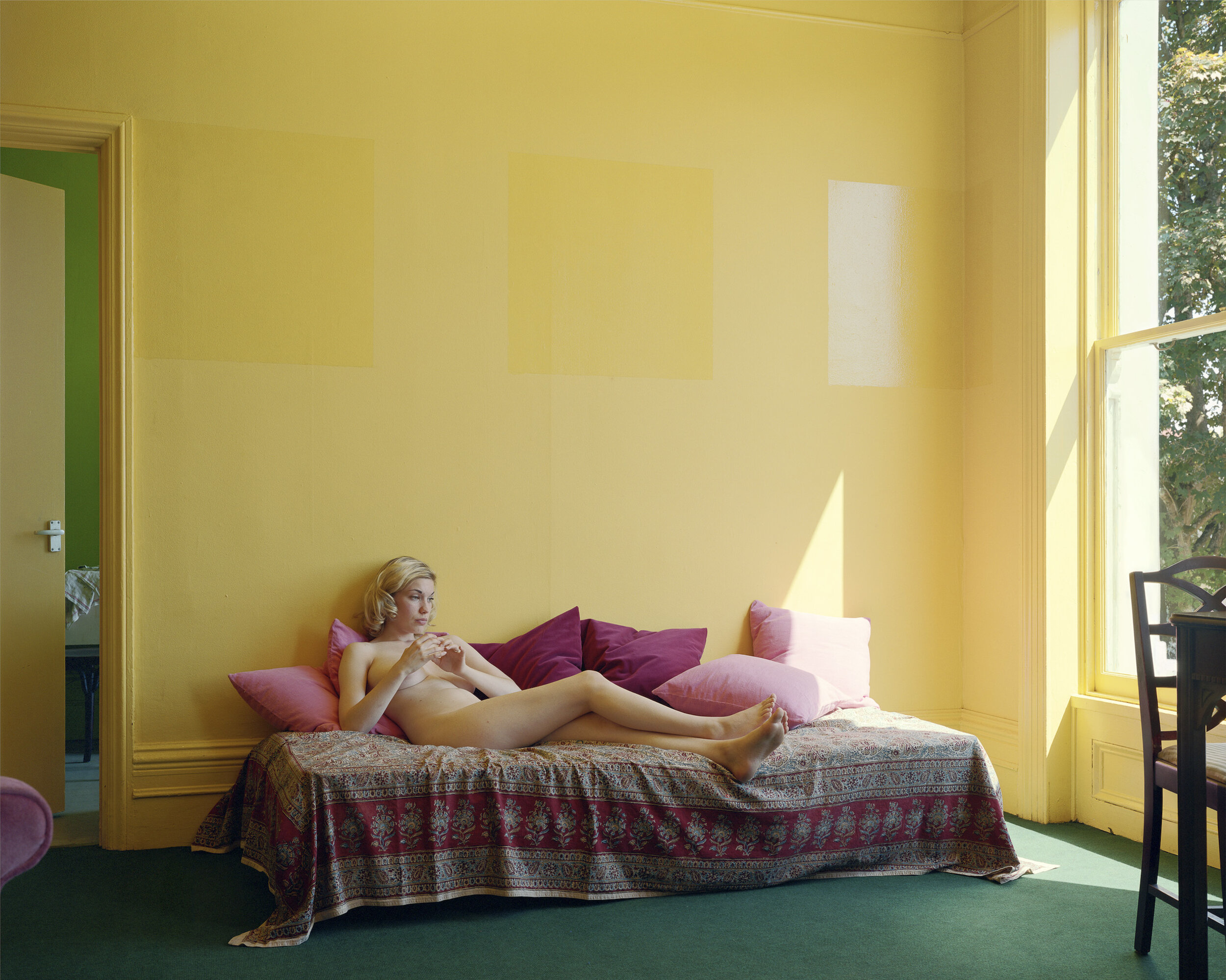FRIEZE Talk with Jeff Wall
Jeff Wall, Picture for Women, 1979, transparency in lightbox, 142.5 x 204.5 cm, Courtesy of the artist
by Summer Myatt
Known for his large-scale backlit color transparencies, renowned Canadian photographer Jeff Wall made a name for himself in the 1970s with his seminal work, Picture for Women. Adopting a method most commonly used in advertising, Wall elevated the lightbox with his pictorial photography, cementing himself as a staple in Conceptualism. This month, Director of the National Portrait Gallery in London, Nicholas Cullinan, sat down for an insightful virtual conversation with Wall, in which the artist discussed his process, his inspirations, and the future of photography.
Jeff Wall, Summer Afternoons, 2013, 2 colour photographs, Female: 200.0 x 251.5 cm, Courtesy of the artist
Wall has said that his motivation for capturing an image is rooted more in the act of reconstruction than in sentimentality. Rather than immediately memorialize a moment in time, Wall prefers to revisit and recreate his memories after he’s had time to ruminate on them. “There’s something fascinating to me about seeing something, experiencing something and not photographing it, not capturing it in the conventional way that photography operates… but letting it escape,” said Wall during his Zoom talk this month. “That fascinates me, the idea that I could’ve photographed something and didn’t—it escaped and left some mark on me, which then is the place from which I begin to develop a picture.”
Jeff Wall, Summer Afternoons, 2013, 2 colour photographs, Male: 183 x 212.4 cm, Courtesy of the artist
Wall operates at the unique intersection of cinematography, composition, and archive. Simultaneously staging his photos and recording real events, he makes work that he likes to call “near documentary.” Describing his 2009 image of costume historian Ivan Sayers’ lecture in Vancouver, Wall explains, “Nothing is invented here. I haven’t changed anything, I just simply reconstructed.” In reality, what Wall captured wasn’t really the event at all, but an elaborate restaging of it; he invited Ivan, the costume model, and the entire audience back to the location of the lecture and had the subjects reenact what happened during the moment that left its distinct impression on Wall.
Jeff Wall, Ivan Sayers, costume historian, lectures at the University Women’s Club, Vancouver, 7 Dec. 2009. Virginia Newton-Moss wears a British ensemble c. 1910, from Sayers’ collection. 2009, colour photograph, 224.3 x 182.5 cm, Courtesy of the artist
This intertwining of fabrication and reality is essential to Wall’s work, and he expertly harnesses that confluence to infuse his images with a thrilling tension. “Sometimes images feel more lifelike than life itself because things are nearly happening in them,” says Wall. “The ‘nearly happening’ is what people love about art. They know it’s not happening, they know they’re looking at an illusion, they are completely aware of it. That’s one of the elemental illusions that people really love about pictorial art.”
Jeff Wall, Stereo, 1980, 2 panels, 1 transparency, i backlit sign, each: 213 x 213 cm, Courtesy of the artist
Jeff Wall, Stereo, 1980, 2 panels, 1 transparency, i backlit sign, each: 213 x 213 cm, Courtesy of the artist
Notable amongst the elements critical to Wall’s work are chance, contingency, and spontaneity. He describes his 1980 work Stereo as “an early example of an image generating a second entity out of itself.” The work began as a singular image of a man wearing only a pair of headphones on an orange couch, but it eventually expanded to manifest a second physical representation: a lightbox featuring just the word “stereo,” like an advertisement in a shop. Citing the dissonance between a theme and the single image format, Wall simply lets a second work “appear” if it happens to. The artist recalled, “I’ve never actually planned to make two or three images, they’ve always resulted from the escape of the subject from one frame.”
The talk concluded with Wall answering poignant questions from the virtual audience. In our twentieth century culture of constantly consuming visual media, Wall believes if you haven’t seen a work physically, you haven’t really experienced it. Of the future of pictorial art, he says, “If tableaux survives, it’ll be because people want it to.”













